|
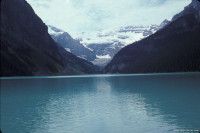
Lake Louise in Banff National Park. June, 1999
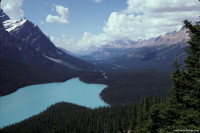
Peyto Lake in Banff National Park was formed by a melting glacier along with the terminal moraine the glaciers created at the end of the lake. June, 1999

Banff Spring Hotel in Banff National Park. June, 1999
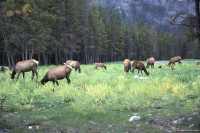
June, 1999
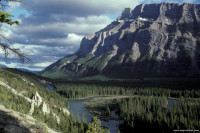
Mt. Assiniboine and the Bow River in Banff National Park June, 1999

Moraine Lake in Banff National Park June, 1999
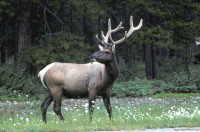
June, 1999
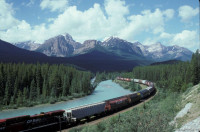
June, 1999

Glaciers extend throughout Banff National Park – Athabasca Glacier. June, 1999
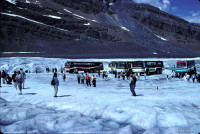
A bus tour to Athabasca Glacier in Banff National Park. June, 1999
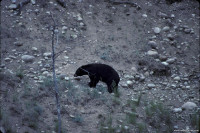
June, 1999

June, 1999
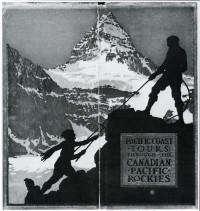
A 1917 advertisement brochure distributed by the Canadian Pacific Railway.
Established in 1885 in the Canadian Rockies of Alberta, Banff National Park is the oldest of Canada’s National Parks. It encompasses glaciers, ice fields, forests, lakes, waterfalls, and rivers. The fauna and flora are in abundance especially for those who travel to Banff in the summer months. Hiking and fishing are among the most popular sporting activities as well as animal watching and photography. The virgin scenery of snowcapped mountains makes for breathtaking photographs at every turn.
Description: Among Banff’s many attractions are The Banff Springs Hotel and Chateau Lake Louise which were built during the late nineteenth and early twentieth centuries by the Canadian Pacific Railway. These luxurious hotels were built to encourage the wealthy to travel by rail to western Canada. Even though these hotels no longer belong to the railway, and most tourists travel by air and automobile, these beautiful hotels continue to endure as destinations for tourists from around the world.
The park was established when Canada’s Prime Minister John A. Macdonald created a preserve in the area surrounding the hot springs in Banff and later enlarged the area to include Lake Louise and the northern ice fields. Roads began to be built during World War I by prisoners from Austria, Hungary, Germany, and the Ukraine. Later, during The Great Depression public works projects continued the building of roads throughout Banff.
Banff National Park is home to 56 animal species and 280 types of birds. Among the animals most prevalently seen by tourists are elk which can be seen grazing in the small town of Banff located in the Bow River valley. Visitors are reminded that these are wild animals and are not safe to approach or feed. When at higher altitudes, one often spots mountain goats and big horned sheep. It is not uncommon to see both black and grizzly bear throughout Banff and bald eagles are often seen soaring high over head when traveling through the park.
Because of the popularity of the Banff National Park, Canada has had to implement new ecological preservation policies. Banff became a UNESCO World Heritage Site (United Nations Educational Scientific and Cultural Organization) in 1984, thus furthering its efforts to preserve its ecological sustainability.
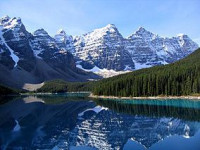
Banff National Park (pronunciation: /ˈbæmf/) is Canada's oldest national park, established in 1885 in the Rocky Mountains. The park, located 110–180 km (68–110 mi) west of Calgary in the province of Alberta, encompasses 6,641 km of mountainous terrain, with numerous glaciers and ice fields, dense coniferous forest, and alpine landscapes. The Icefields Parkway extends from Lake Louise, connecting to Jasper National Park in the north. Provincial forests and Yoho National Park are neighbours to the west, while Kootenay National Park is located to the south and Kananaskis Country to the southeast. The main commercial centre of the park is the town of Banff, in the Bow River valley.






 Please share your ideas with us.
Please share your ideas with us.